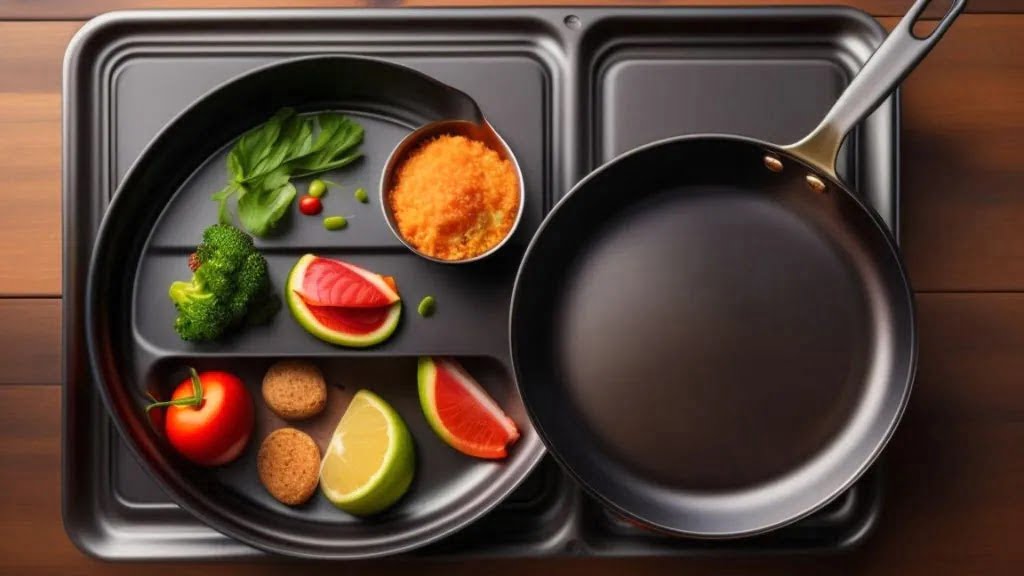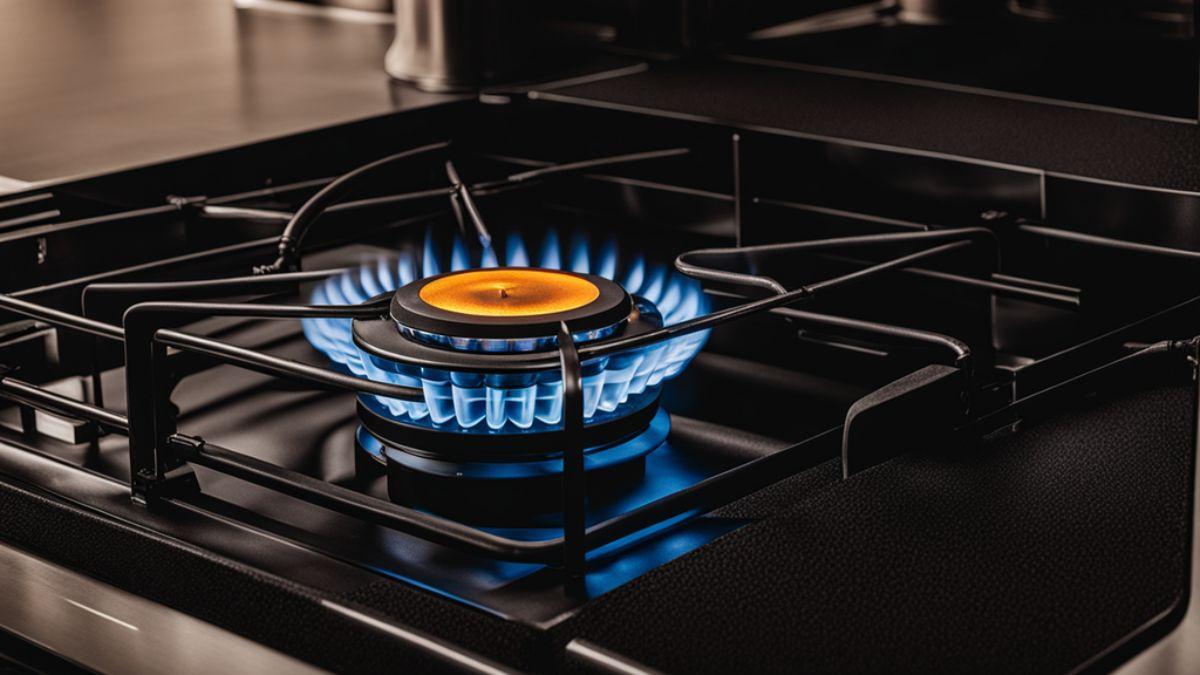
We may earn money or products from the companies mentioned in this post.
Have you ever wondered if you can put those handy non-stick pans in the dishwasher? As convenient as non-stick cookware is, the coating can be delicate. You’ve probably heard mixed messages about whether or not it’s safe to toss non-stick pans in the dishwasher. The truth is, it depends. In some cases, the dishwasher can damage the non-stick coating and affect its performance over time. However, with certain precautions, you may be able to machine wash some non-stick pans. Here’s the real deal on dishwasher-safe non-stick cookware, so you can keep your pans in great shape.
The Convenience of Non-Stick Pans
Non-stick pans are so convenient to use and clean up—no more scrubbing stuck-on messes! But before you throw your non-stick pan in the dishwasher after dinner, there are a few things you should know.
The Pros of Dishwashing Non-Stick Pans
It’s easy and saves time. Tossing your non-stick pan in the dishwasher after cooking is certainly convenient and saves you from having to hand wash it. If you’re short on time or just don’t feel like doing the dishes, the dishwasher can be appealing.
It sanitizes. The hot water in dishwashers kills bacteria and properly sanitizes your cookware. If you have health concerns or just want the cleanest pan possible, the dishwasher may give you peace of mind.
The Cons of Dishwashing Non-Stick Pans
It can damage the nonstick coating. The harsh detergents and high heat in dishwashers can break down the non-stick coating over time, causing it to peel and chip. While an occasional cycle probably won’t hurt, frequent dishwashing is hard on most non-stick coatings.
It leads to sticking. As the non-stick coating deteriorates, foods are more likely to stick to the pan, defeating the whole purpose of using a non-stick pan. You’ll end up having to scrub and scour your pan to get it clean again.
Rusting is possible. Exposing non-stick pans to prolonged moisture in the dishwasher can lead to rusting. Rust not only damages the pan but also poses health risks from leaching metals.
In the end, hand washing your non-stick pans with a soft sponge or nylon scrubber and mild detergent is the gentlest approach and will help maximize the lifespan of your cookware. An occasional cycle in the dishwasher probably won’t do permanent damage, but for the best results, hand washing is the way to go. A few extra minutes at the sink will save you money and frustration in the long run.
Are Non-Stick Pans dishwasher-safe? The Short Answer
Are Non-Stick Pans dishwasher-safe? The Short Answer
In short, non-stick pans can be dishwasher safe, but it depends on the specific pan. Many non-stick pans are hand wash only, while some higher-end options are advertised as dishwasher-safe. However, even dishwasher-safe non-stick pans can lose their non-stick coating more quickly when machine-washed. For the best results, hand washing non-stick pans is recommended.
Why Non-Stick Pans Can Be Damaged in the Dishwasher
The harsh detergents and high heat of a dishwasher can strip the non-stick coating from pans over time. Non-stick coatings like Teflon can break down when exposed to the harsh environment inside a dishwasher. The coating may start to peel and chip, ruining your pan. Scrubbing or abrasive cleaners used in dishwashers can also damage the coating.
Pros of Dishwasher Use
Putting non-stick pans in the dishwasher does offer some benefits. It’s convenient and saves time. The high heat can also fully sanitize the pans. If you do put non-stick pans in the dishwasher, be sure to place them on the top rack away from the heating element. Run pans on an air-dry setting and avoid using heavy detergents, which can be more damaging.
Hand Washing is Best for Most Non-Stick Pans
To keep your non-stick pans in the best condition for as long as possible, hand washing is recommended. Gently wash pans with a soft sponge or nylon scrubber and a mild detergent. Avoid abrasive cleaners. Rinse pans thoroughly and dry completely to prevent water spots. With proper care and hand washing, a quality non-stick pan should last for many uses.
So in summary, while some non-stick pans are advertised as dishwasher safe, hand washing is the gentlest approach and will help your non-stick pans last longer. When in doubt, check the specifications for your specific pan to determine if machine washing is recommended. With regular hand washing and proper care, you’ll be enjoying easy-to-clean non-stick pans for years to come!
Dishwasher Detergents Can Damage Non-Stick Coatings
Detergents and harsh chemicals found in most dishwashers can damage the non-stick coating on pans, causing it to deteriorate and flake off over time. While occasional trips through the dishwasher probably won’t completely ruin your non-stick pan right away, it’s not ideal and will shorten its lifespan.
The Heat
The high heat of the dishwasher can also cause non-stick coatings to start breaking down. Non-stick coatings are often made of or contain PTFE, a plastic polymer that starts to degrade at high temperatures. The hot, steamy environment of a dishwasher, often over 130°F, is hot enough to cause PTFE to start melting and burning off.
Instead of putting your non-stick pans in the dishwasher, hand wash them with a soft sponge or nylon scrubber and a mild detergent. Gently wash the pan right after cooking while it’s still warm to prevent stuck-on messes. Rinse well with water to remove any remaining detergent residue. Avoid using abrasive cleaners, strong detergents, or steel wool, which can further damage the non-stick coating.
Drying
After washing, thoroughly dry your non-stick pans to prevent water spots. Air drying is best. You can also hand dry with a towel, wiping gently. Avoid stacking non-stick pans together when drying, as this can lead to scratches. Store pans separately or with padding, like a towel, in between.
Following these care tips will help extend the lifespan of your non-stick cookware. While non-stick coatings will degrade over time no matter what, proper care and hand washing can keep your pans in good condition for many meals to come. An occasional trip through the dishwasher probably won’t ruin your pan immediately, but for the best long-term performance, hand washing is the way to go. Your non-stick pans and your wallet will thank you!
High Heat Cycles Can Warp Nonstick Pans
High heat cycles in the dishwasher can potentially warp and damage your non-stick pans over time. Extreme temperatures, often over 130°C, can cause non-stick coatings to start breaking down and pans to lose their shape. While an occasional wash in the dishwasher won’t necessarily ruin your pan right away, repeated use of the high-heat drying cycle is hard on non-stick coatings and should be avoided when possible.
Hand washing is gentler
Gently hand washing your non-stick pans with a soft sponge or nylon scrubber and mild dish soap is the most pan-friendly method. Make sure to thoroughly dry your pans after washing to prevent water spots. Hand washing may require a few extra minutes of your time, but it will help your non-stick pans last longer and perform better. If you do opt to machine wash, choose a low-heat cycle and avoid the heated dry option, which can subject pans to prolonged high heat.
Non-stick sprays and abrasive cleaners damage coatings
In addition to high heat, you’ll want to avoid using abrasive cleaners, strong detergents, and non-stick cooking sprays, which can break down non-stick coatings over time. Scrubbing too hard with abrasive materials like steel wool or abrasive sponges can also damage the coating. Stick with soft sponges, nylon scrubbers, and gentle dish soaps.
Re-seasoning pans
Even with the best care, non-stick coatings can start to deteriorate over months and years of use. Re-seasoning your pans by coating them in oil and baking them in the oven can help rejuvenate the non-stick coating and extend the life of your pans. Rub a thin coat of vegetable, canola, flaxseed, or peanut oil over the inside of your pan. Place it upside down on a foil-lined baking sheet and bake at 175°C for about an hour. Let it cool, then wipe away any excess oil with a paper towel. Re-seasoning pans 2-3 times a year will help keep them in tip-top shape.
With regular TLC—avoiding high heat, abrasive cleaners, and harsh scrubbing – and occasional re-seasoning, your non-stick pans can provide many years of convenient, low-fat cooking. Take good care of them, and they’ll take good care of you!
The Benefits of Handwashing Non-Stick Pans
Handwashing your non-stick pans is really the best way to keep them in good shape. While the dishwasher may seem convenient, it can actually shorten the lifespan of your nonstick coatings. Here are a few benefits of handwashing your non-stick pans:
Gentler Cleaning
Handwashing is a gentler process that won’t strip non-stick coatings as quickly. The high heat and harsh detergents in dishwashers can break down non-stick coatings over time with repeated washes. Handwashing with a soft sponge or nylon scrubber and a mild detergent is a much gentler way to clean non-stick pans without damaging the coating.
Spot Cleaning
Handwashing also allows you to spot-clean any stuck-on bits of food right away before they get baked on, which makes cleaning much easier. You can target specific stuck-on areas with a paste of baking soda and water and let it sit before scrubbing off. This kind of spot treatment isn’t really possible in a dishwasher.
No Water Spots
Handwashing and then air drying your non-stick pans will prevent unsightly water spots from forming. Mineral deposits in tap water can lead to water spots on pans when dried in the dishwasher. Water spots don’t impact performance, but they don’t look great. Air drying pans after handwashing avoid this problem.
Longer Lasting
Ultimately, handwashing your non-stick pans and taking good care of them will help extend the life of the non-stick coating. With proper care and maintenance, a quality non-stick pan should last 5 years or more. Dishwasher use can reduce this lifespan to 1-3 years. Investing in high-quality, dishwasher-safe non-stick pans and handwashing them is the best way to maximize their lifespan.
While handwashing non-stick pans do require a little extra effort, the benefits to their longevity and performance make it well worth it. Handwashing is truly the gentlest, most effective way to clean non-stick pans and keep them in great shape for the long run. If you get in the habit, your non-stick pans will thank you!
Tips for Handwashing Non-Stick Cookware
Handwashing your non-stick cookware is the gentlest way to clean it and help extend its lifespan. While the dishwasher can be convenient, it exposes non-stick coatings to harsh detergents and high heat, which can cause damage over time. With some care and effort, you’ll be able to keep your non-stick pans in great shape through handwashing.
Use a soft sponge or nylon scrubber
Avoid abrasive scrubbers, as these can scratch the non-stick coating. Stick to soft sponges, nylon scrubbers, or soft bristled brushes. Gently wash the pan with mild dish soap and warm water.
Soak stuck-on messes before scrubbing
For stuck-on foods, fill the pan with warm water and dish soap. Let it soak for at least 30 minutes so the mess can loosen from the surface. The longer it soaks, the easier it will be to clean. Scrub gently after soaking to avoid damaging the coating.
Rinse and dry thoroughly
Rinse your non-stick pan with water to remove all soap residue. Dry the pan immediately to prevent water spots. Use a towel to hand dry the entire pan, including the handles and the underside of the rims. Let the pan air dry completely upside down.
Condition non-stick coatings (optional)
For some non-stick coatings like Teflon, conditioning the surface with oil can help extend the life of the coating. Wipe the inside of the pan with a light coat of vegetable, canola, flaxseed, or walnut oil. Use a paper towel to spread the oil evenly and wipe away any excess.
Avoid high heat when possible
High heat can cause non-stick coatings to start breaking down faster. When possible, use medium or low heat for cooking. Only use high heat when necessary and for short periods. Allow pans to cool before washing to avoid warping the metal.
By following these tips, your non-stick cookware should stay in great shape for years to come. An occasional handwash and proper care can go a long way toward maximizing the lifespan of your non-stick pans.
Signs Your Non-Stick Pan Is Wearing Out
After using your non-stick pan for a while, you may start to notice some signs that it’s wearing out. While non-stick coatings are designed to last, they do degrade over time with normal use and washing. Here are some signs your non-stick pan may be nearing retirement:
Food starts to stick
The hallmark of a non-stick pan is that food easily releases with little oil or fat. If foods like eggs, pancakes, or stir-fries start requiring more oil or sticking to the pan, the non-stick coating is breaking down. It’s time for a replacement.
The coating becomes scratched or peels
Non-stick coatings can scratch, chip, or peel, especially if used with metal utensils. As the coating deteriorates, the non-stick properties disappear. Small scratches aren’t an issue, but once the coating starts flaking or peeling in spots, it should be replaced.
The pan warps or no longer sits flat
Repeated heating and cooling can cause nonstick pans to warp over time. A warped or uneven pan won’t cook food evenly and is difficult to clean. It’s best to replace a pan that no longer sits flat on the stovetop or in the oven.
There are dark stains that won’t wash off
Built-up grease and oil stains that won’t wash off no matter how hard you scrub are a sign the non-stick coating has started to break down. These stains usually mean it’s time for a new non-stick pan.
There is a strong chemical smell when cooking
If there is a strong chemical or plastic smell when cooking in a non-stick pan, it could mean the coating is overheating or breaking down. This means toxic fumes could be released, and it’s best to stop using the pan immediately.
When your faithful non-stick pan starts showing these signs of wear, it’s time to shop for a replacement. A quality non-stick pan used properly should last 3-5 years. By replacing it once it starts breaking down, you’ll ensure safe, healthy, and enjoyable cooking experiences for years to come.
When to Replace Your Non-Stick Pans
As convenient as non-stick pans are, they do wear out over time. After a few years of regular use, the non-stick coating starts to break down and lose its effectiveness. At this point, it’s time to consider replacing your nonstick pans. Here are some signs it may be time for a replacement:
Food starts sticking
If foods that used to slide right off are now sticking to the pan, the non-stick coating has likely worn away. Scrambled eggs, pancakes, and stir-fries should release from the pan easily. If not, it’s best to replace the pan.
Scratches and chips in the coating
Deep scratches, chips, or cracks in the non-stick coating mean it’s no longer protecting the pan. Bacteria and odors can build up in these damaged areas, and the pan won’t cook food evenly. It’s not worth risking your health or ruining meals.
Dark stains that won’t wash off
Non-stick coatings can break down over high heat and release fumes that stain the pan. These stains are hard to remove and are a sign the pan should be replaced. For the sake of your health and safety, don’t continue using a pan with persistent dark stains.
Peeling or flaking coating
If the non-stick coating is visibly peeling, flaking, or chipping off, it’s no longer doing its job, and bits of coating could end up in your food. Peeling or flaking pans should be discarded and replaced.
Fumes or odors
Heavy fumes or odors coming from a non-stick pan are warning signs that the coating is overheating and breaking down. Breathing in fumes from an overheated nonstick pan can be hazardous to your health. It’s not worth the risk, throw away the pan.
If your faithful non-stick pan is showing any of these signs of age, it’s time to bid it farewell. For the best results, most experts recommend replacing your non-stick pans every 3 to 5 years with normal use, or sooner if damage occurs. Your health and safety should be the top priorities here. When in doubt, it’s best to replace it.
Conclusion
So there you have it – the lowdown on whether nonstick pans can handle the dishwasher. As you can see, it’s not quite as straightforward as you might think. While modern nonstick coatings are more durable than in the past, frequent dishwashing can still accelerate wear and tear. If convenience is key, stick to hand washing when you can and save the dishwasher for occasional use. When you do machine wash, be sure to stick to the gentle cycle and avoid harsh detergents. A little TLC will help keep your nonstick pans in tip-top shape so you can whip up omelets and stir fries with ease for years to come. Happy cooking!
More Best Cookware Recommendations
- Is Carote Cookware Safe? A Safe and Healthy Option
- Is Masterclass Cookware Safe? (PFOA-Free, Non-Toxic, and Durable)
- Swiss Diamond Cookware Reviews: Everything You Need to Know
- Zeuwing Cookware Reviews: Revolutionize Your Cooking with these Power Packed Pots
- The History of Cookware: From Simple Tools to High-Tech Appliances







